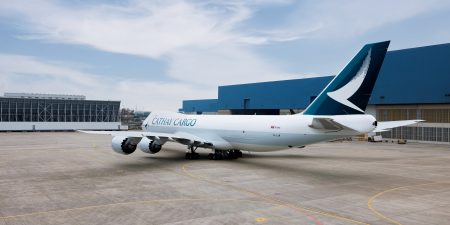How did you respond to the changing market because of the virus?
Swiftly. To give you an example, when we saw a significant drop in Cathay Pacific’s belly capacity, we knew that would be problematic for all transhipments into the Chinese mainland. After the border closed, we liaised with our truck operator for our cross-border service, CBX, a product we offer to our airline customers for carrying transhipments from Hong Kong to various parts of Southern China. With no air access possible, we asked our CBX operator to truck shipments to more northern parts of the Chinese mainland too. This helped Cathay Pacific to clear some of its transhipments, and there were many trucks going over the border each day and also bringing in some cargo for export.
What were some of the other COVID-specific achievements?
Back in February, the virus was hitting Hong Kong and there were huge quantities of masks and hand sanitiser being sent here by concerned family and friends, and a lot of people buying online. There were tonnes and tonnes of boxes – the air mail centre at the airport had never handled so much before and the sheer volume meant that people were waiting weeks for their parcels. HongKong Post asked us for help. Within a couple of days we emptied an area in the terminal and made it a temporary mail-handling centre. We were able to help clear the backlog in a couple of weeks.
When Cathay Pacific started using passenger aircraft to handle cargo-only flights and converted some aircraft for cabin load, we helped to design the processes for safe loading.
We also helped with the approvals and clearances for other airlines that were running ad hoc charter flights filled with PPE but had never been to Hong Kong before. While this was an opportunity to generate revenue, we also wanted to play our part as much as possible on humanitarian grounds.
How have you prepared for vaccine shipments?
We’ve done a lot of preparatory work and established a task force that undertook a very thorough review of our capabilities. At that point, we estimated that we could handle 6.6 million doses of vaccine per day. We had already planned to expand our pharmaceutical room, so by the end of this year that will increase to around 8 million doses. We also have a very flexible design in the terminal and a lot of charging points for active containers and space for re-icing passive containers.




